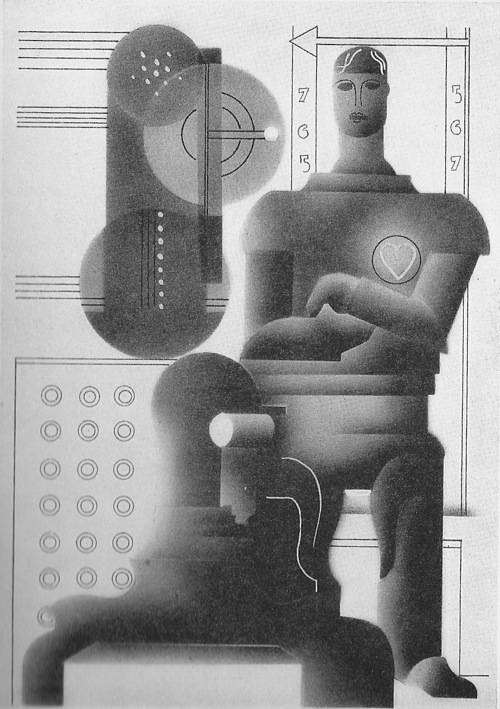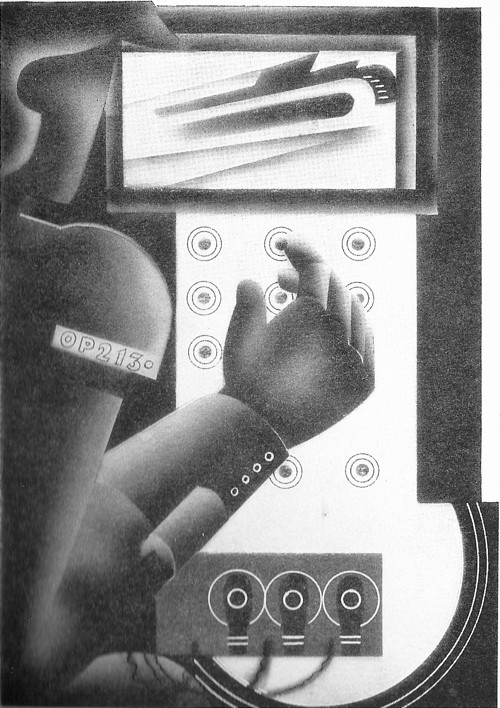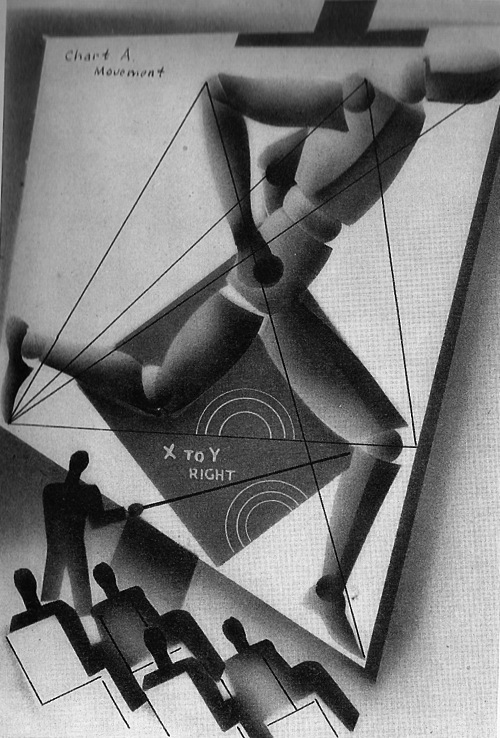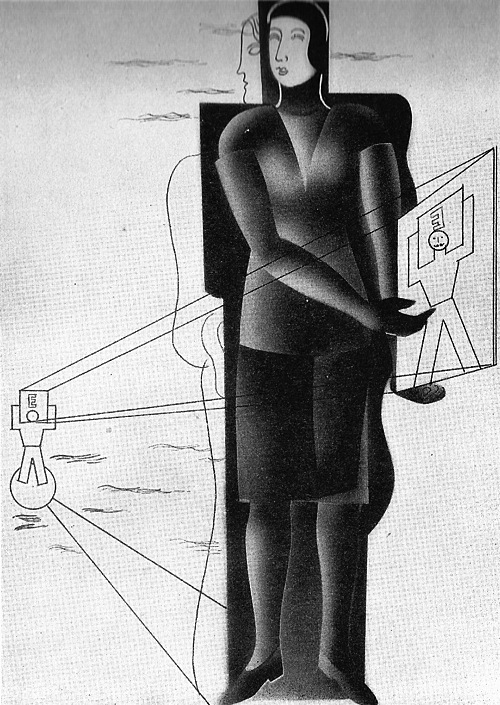I have to face the fact that I do not know where most of the collectables in this house have come from. I can account for almost every table and teaspoon, but not it seems the ephemera, the posters and the books. Especially not the books. I came across two Hans Schleger exhibition catalogues while looking for something else the other day. “You’re going to say that you’ve never seen those before,” said Mr Crownfolio, and he was right. But I’m sure I haven’t.
Still, those are for another day; today’s post is a different unaccountable book instead. We’ve had it for a while, that’s all I can tell you. It’s The World in 2030 by the Earl of Birkenhead, illustrated by Edward McKnight Kauffer.
Having been thinking about McKnight Kauffer on here recently, I got this down from the shelf. And then when Shelf Appeal in turn posted another of his illustrations, it only seemed fair to continue the conversation.
But what a great subject for Kauffer this is: how better to express the future than in the modernist style? Reaching its apotheosis in the final illustration, the future as seen in 2030, a double layer of a future so exciting that it can’t quite be expressed. Although looking, in the end, quite a lot like a London Transport poster.
But, as is the way of prophecies, the book is less revealing about the future than about the time in which it was written. The first, long, chapter for example is all about the future of war.
While this illustration is for ‘The Amenities of 2030’
Amenities isn’t a word that sings the future to us any more, is it? Local amenity societies, town planning, public conveniences. It’s a word which wears a cardigan and slippers these days. But it was young and futuristic once too.
As so often with these books, I can recommend the illustrations more than the text. Birkenhead was an M.P., Lord Chancellor, great friend of Churchill and sensible enough to commission Kauffer, but his views haven’t aged as well as the illustrations.
An average woman is more valuable to the state than the average man: but the most gifted woman is less valuable to the state than an exceptional man.
She doesn’t look very pleased with her proposed lot either.
It seems to be fairly expensive on Abebooks at the moment, although I’m sure we didn’t pay such monies for it. Then again, what do I know?





It wasn’t only Birkenhead’s views on women that leave something to be desired, to my mind anyway. F E Smith before ennoblement, he was an unpleasant, Paisley-style Unionist who incited the Army to mutiny in Ireland. The story is told in ‘The Strange Death of Liberal England’ by George Dangerfield, a fascinating and well-written account of the extraordinary events of 1911.
Thank you. I have summoned the book up from the Library Reserve Stacks…
I’m pleased to see that you regularly include (and champion) the work of E.McKK.
Regarding the pochoir illustrations you mention (via the Shelf Appeal post) I wrote an article on these for the journal of the Fine Press Book Association – ‘Parenthesis 16’ (Feb 2009)
http://fpba.com/blog/?p=756
Unfortunately the article is not available on line.
The above illustrations are early examples of McKK’s use of an airbrush – he used this technique on 3 Underground posters designed in 1930 – issued in 1931. The London Transport Museum link attached shows one of a pair: ‘Play Between 6 and 12 – the Bright Hours’ and ‘Shop Between 10 and 4 – the Quiet Hours’. In these McKK used a clock image similar to the one depicted in the above illustration
http://www.ltmcollection.org/posters/poster/poster.html?_IXMAXHITS_=1&IXinv=1983/4/3002&IXsummary=artist/artist&IXartist=Edward%20McKnight%20Kauffer&_IXFIRST_=88&IXenlarge=1741-82
I too was amazed that the bastardized McKK poster used for the V&A travelling exhibition (shown in your last post) sold for £140.00. There are a number of interesting stories relating to the original poster (‘Soaring to Success! Daily Herald – the Early Bird’, 1919). This version has 8 birds but there was another smaller version with 7 birds! But there is no surviving example.
Many thanks for all of that, it’s much appreciated.
And yes, that poster is a bit bemusing, isn’t it. I used to walk past it on a regular basis when it hung in the back stairs of the V&A, and loved it then, but I certainly wouldn’t buy that reprint!